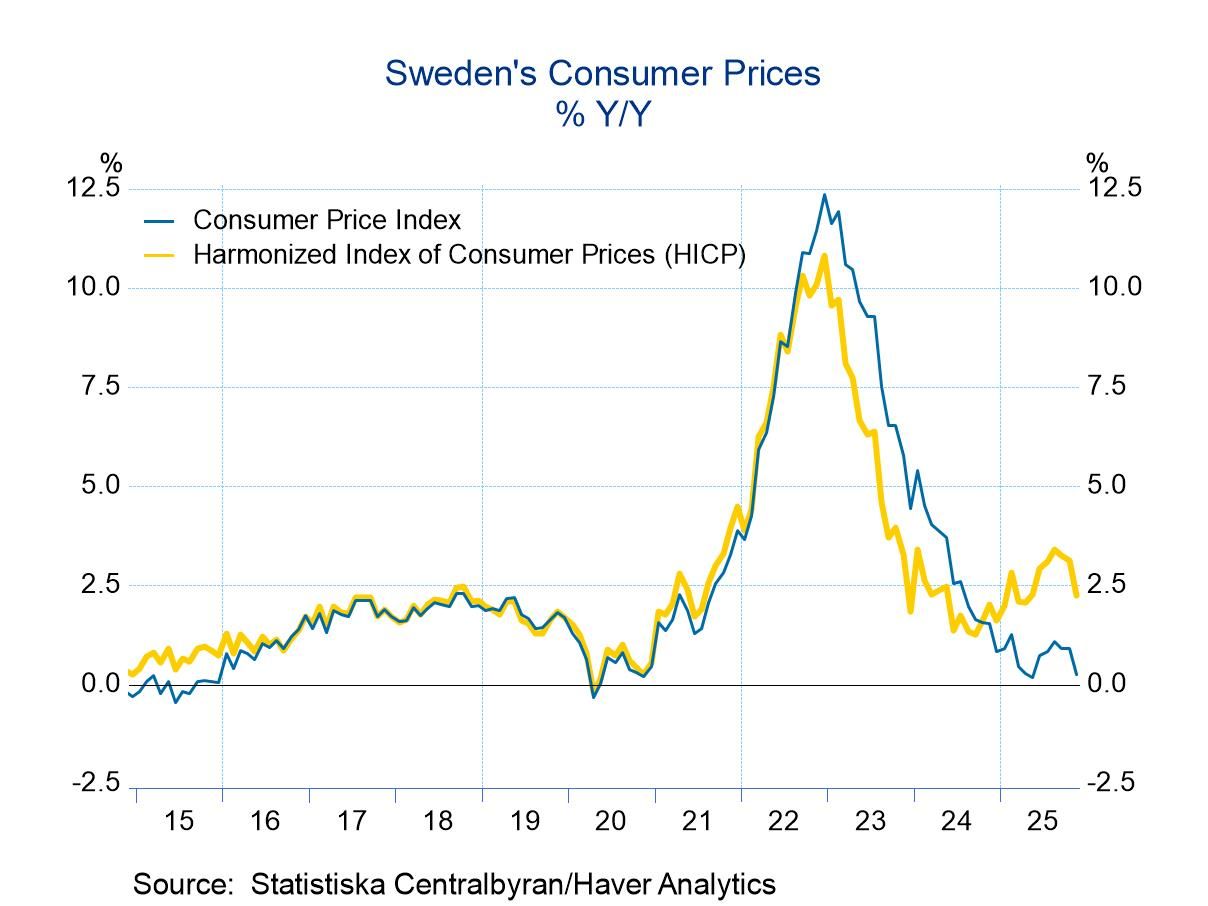U.S. Construction Spending Unexpectedly Drops in March, the First M/M Fall Since September
Summary
- March construction spending -0.5% m/m; +2.8% y/y, the lowest y/y rate since May ’19.
- Residential private construction -0.4% m/m, led by a 1.2% drop in home improvement building.
- Nonresidential private construction -0.8% m/m, down for the second month in three.
- Public sector construction -0.2% m/m, reflecting a 0.2% decline in nonresidential public building.


The value of construction put in place unexpectedly fell 0.5% m/m in March after rises of 0.6% in February (+0.7% initially) and 0.1% in January (-0.5% previously), data from the U.S. Census Bureau showed. The March reading was the first m/m fall following five straight m/m gains. A 0.3% m/m March rise had been expected in the Action Economics Forecast Survey. The year-on-year rate of increase decelerated to 2.8% in March, the lowest since May 2019, after registering at 3.4% in February and January. The latest y/y figure was lower than 8.7% in March 2024; thus, having remained below its recent high of 9.8% in January 2024 and a peak of 18.6% in April 2022.
Private construction slid 0.6% (+2.3% y/y) in March, down for the first time since September, following increases of 0.7% in February (+0.9% initially) and 0.1% in January (-0.7% previously). Residential private construction fell 0.4% (+2.8% y/y) in March, the first m/m fall in six months, after an unrevised 1.3% gain in February. Home improvement building dropped 1.2% (+13.4% y/y), the first m/m decline since December, following a 2.3% February gain; it was 41.1% of the residential private construction. Single-family building edged up 0.1% (-0.8% y/y), the smallest of seven consecutive m/m increases, after a 0.8% February rise; it was 46.6% of the residential private construction. Meanwhile, multi-family building was essentially unchanged m/m (-12.1% y/y) in March following 15 straight m/m decreases; it was 12.3% of the residential private construction.
Nonresidential private construction fell 0.8% (+1.6% y/y) in March after a 0.1% increase in February (+0.4% initially) and a 0.1% easing in January (-0.2% previously). The March fall reflected m/m drops in the following nonresidential private constructions. These included religious (-2.9%; +16.4% y/y), health care (-2.2%; -5.2% y/y), office (-1.8%; +2.7% y/y), educational (-1.7%; -4.2% y/y), lodging (-1.6%; -1.0% y/y), commercial (-1.0%; -5.8% y/y), manufacturing (-0.4%; +3.6% y/y), communication (-0.3%; +2.2% y/y), and utilities (-0.1%; +7.0% y/y). In contrast, private constructions for amusement & recreation (1.5%; 7.0% y/y) and transportation (0.7%; 10.2% y/y) rose m/m in March.
The value of public construction declined 0.2% (+4.7% y/y) in March after holding steady in February (+0.2% initially), reflecting a 0.2% increase (-1.9% y/y) in residential public construction and a 0.2% easing (+4.8% y/y) in nonresidential public construction. The March decline reflected m/m drops in the following nonresidential public constructions. These included utilities (-4.8%; -12.8% y/y), commercial (-1.6%; +40.3% y/y), amusement & recreation (-1.0%; +19.1% y/y), educational (-0.6%; +7.6% y/y), sewage & waste disposal (-0.6%; +10.6% y/y), and health care (-0.4%; +13.0% y/y). Notably, spending on highways & streets, which made up 28.7% of public construction spending, fell 0.5% (-2.4% y/y) in March, the first m/m fall since October, following a 0.9% increase in February. To the upside, the following public constructions rose m/m in March: office (1.6%; 6.0% y/y), transportation (1.4%; 7.3% y/y), public safety (0.7%; 4.1% y/y), conservation & development (0.6%; 4.7% y/y), and water supply (0.6%; 12.2% y/y).
The construction figures can be found in Haver's USECON database. The expectations figure is from the Action Economics Forecast Survey in AS1REPNA.


Winnie Tapasanun
AuthorMore in Author Profile »Winnie Tapasanun has been working for Haver Analytics since 2013. She has 20+ years of working in the financial services industry. As Vice President and Economic Analyst at Globicus International, Inc., a New York-based company specializing in macroeconomics and financial markets, Winnie oversaw the company’s business operations, managed financial and economic data, and wrote daily reports on macroeconomics and financial markets. Prior to working at Globicus, she was Investment Promotion Officer at the New York Office of the Thailand Board of Investment (BOI) where she wrote monthly reports on the U.S. economic outlook, wrote reports on the outlook of key U.S. industries, and assisted investors on doing business and investment in Thailand. Prior to joining the BOI, she was Adjunct Professor teaching International Political Economy/International Relations at the City College of New York. Prior to her teaching experience at the CCNY, Winnie successfully completed internships at the United Nations. Winnie holds an MA Degree from Long Island University, New York. She also did graduate studies at Columbia University in the City of New York and doctoral requirements at the Graduate Center of the City University of New York. Her areas of specialization are international political economy, macroeconomics, financial markets, political economy, international relations, and business development/business strategy. Her regional specialization includes, but not limited to, Southeast Asia and East Asia. Winnie is bilingual in English and Thai with competency in French. She loves to travel (~30 countries) to better understand each country’s unique economy, fascinating culture and people as well as the global economy as a whole.




 Global
Global

